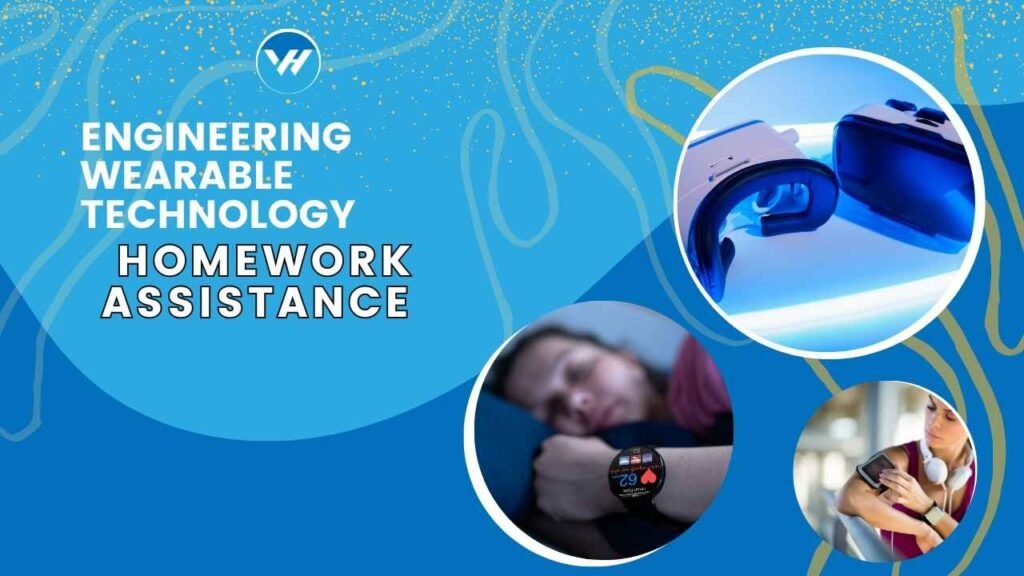Wearable technology is revolutionizing the way we interact with the world. From smartwatches to fitness trackers, these devices are becoming an integral part of our daily lives. For engineering students, mastering the intricacies of wearable technology is both an exciting opportunity and a formidable challenge. With complex assignments and rapidly evolving technology, students often find themselves in need of expert guidance. This is where Virtual Help comes in, offering a lifeline to those navigating the demanding world of wearable technology assignments.

Table of Contents
ToggleUnderstanding Wearable Technology
Wearable technology refers to electronic devices that can be worn on the body, either as accessories or as part of the material used in clothing. These devices often incorporate sensors, processors, and communication modules to perform various functions.
Examples of wearable devices include:
- Smartwatches: Track health metrics, provide notifications, and even make calls.
- Fitness Trackers: Monitor physical activity, heart rate, and sleep patterns.
- Smart Glasses: Offer augmented reality experiences and hands-free navigation.
- Wearable Medical Devices: Monitor vital signs and assist in managing chronic conditions.
Applications of wearable technology span numerous fields, including healthcare, sports, military, and entertainment. In healthcare, wearables can monitor patients’ vital signs in real time, while in sports, they can enhance performance by providing detailed biometric data.
Key Components of Wearable Technology
Creating a wearable device involves integrating several key components:
- Sensors and Actuators: Detect and respond to various physical inputs like movement, temperature, and heart rate.
- Microcontrollers and Processors: Act as the brain of the device, processing data and executing instructions.
- Communication Modules: Enable data transfer between the wearable device and other systems, such as smartphones or computers.
- Power Sources: Provide the necessary energy to run the device, typically through batteries or energy harvesting methods.
Common Assignments in Wearable Technology
Engineering students often encounter a variety of assignments related to wearable technology, including:
- Design and Development of Wearable Devices: Tasks may involve conceptualizing a new wearable device, designing its hardware and software components, and prototyping.
- Data Analysis and Processing: Students may need to analyze data collected from wearables, using statistical and machine learning techniques to derive meaningful insights.
- Integration with Mobile and Web Applications: Assignments might require students to create mobile or web applications that interface with wearable devices, displaying data and allowing user interaction.
- Case Studies and Research Projects: These assignments involve in-depth studies of existing wearable technologies or conducting original research to advance the field.
Challenges in Wearable Technology Assignments
Working on wearable technology assignments can be daunting due to several challenges:
- Technical Complexity: Designing and developing wearable devices requires expertise in multiple areas, including electronics, software development, and data science.
- Interdisciplinary Knowledge: Students must integrate knowledge from various fields, such as biomechanics, materials science, and human-computer interaction.
- Rapid Technological Advancements: The fast-paced nature of technology means that students must stay up-to-date with the latest developments and tools.
- Limited Resources and References: Finding relevant and up-to-date resources can be difficult, as wearable technology is a relatively new and rapidly evolving field.
How Virtual Help Can Assist
Virtual Help offers a comprehensive solution to these challenges by providing:
- Expert Tutors: Access to experienced professionals who can guide students through complex concepts and assignments.
- Customized Assignment Solutions: Tailored assistance to meet the specific needs and requirements of each student’s assignment.
- Access to Latest Research and Resources: A vast repository of resources, including academic papers, tutorials, and industry reports.
- Interactive Learning Tools: Tools and simulations that make learning more engaging and effective.
Benefits of Using Virtual Help for Wearable Technology Assignments
Using Virtual Help can lead to numerous benefits for students:
- Improved Understanding of Concepts: Expert guidance helps students grasp difficult concepts more easily.
- Enhanced Technical Skills: Hands-on assistance and practical exercises improve students’ technical proficiency.
- Better Grades and Academic Performance: With personalized support, students can achieve higher grades and excel in their coursework.
- Time Management and Stress Reduction: Efficient assistance helps students manage their time better and reduce the stress associated with challenging assignments.
How to Get Started with Virtual Help
Getting started with Virtual Help is easy:
- Creating an Account: Sign up on the Virtual Help website or app.
- Browsing Available Tutors: Explore the profiles of available tutors to find one that matches your needs.
- Booking a Session: Schedule a session with your chosen tutor at a convenient time.
- Utilizing Additional Resources: Take advantage of the additional resources and tools provided by Virtual Help to enhance your learning experience.
Conclusion
In conclusion, wearable technology is a fascinating and rapidly growing field that offers numerous opportunities for engineering students. However, the complexity and interdisciplinary nature of this field can make assignments challenging. Virtual Help provides the necessary support to navigate these challenges, offering expert guidance, customized solutions, and a wealth of resources. By using Virtual Help, students can improve their understanding, enhance their skills, and achieve academic success.
FAQs
What is Virtual Help?
Virtual Help is an online platform that connects students with expert tutors to assist with their assignments and studies. It offers an iOS and Android app for easy access.
How can Virtual Help improve my grades?
By providing personalized assistance and expert guidance, Virtual Help helps students better understand their assignments, leading to improved grades and academic performance.
Are the tutors qualified?
Yes, Virtual Help tutors are experienced professionals with expertise in their respective fields, ensuring high-quality assistance.
How do I know which tutor to choose?
Virtual Help provides detailed tutor profiles, including their qualifications and areas of expertise, to help you make an informed choice.
Is Virtual Help available for other engineering subjects?
Yes, Virtual Help offers assistance for a wide range of engineering subjects, including mechanical, electrical, civil, and software engineering, among others.





